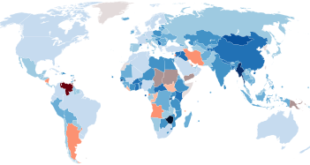CONTEXT:
India has targeted to have it’s Islands- A&N and Lakshadweep as Green Energy says Shri R.K Singh at Country session of Maldives during 3rd Global Re-Invest.Power Minister assures full cooperation to Maldives in its efforts promote RE projects
BACKGROUND:
Shri R K Singh, Union Minister of New & Renewable Energy and Power, today assured full cooperation to the Maldives, the Island nation in its efforts to promote RE projects. While speaking at Country session of Maldives during 3rd Global Re-Invest.
MAIN POINTS:
- India has installed about 136000mw of RE capacity with capacity addition of another 57000mw under implementation.
- It has a robust energy efficiency programme under which more than 11 million LED street lights have been installed,
- Reducing CO2 emission with addition of more green energy resources high on priorities.
INDIA-MALDIVES RELATION WITH RESPECT TO RENEWABLE ENERGY:
- Since 2013, the Government of Maldives has been proactively pursuing renewable energy goals that support strengthening the ecology, as well as the economy.
- Starting with the Maldives Energy Policy and Strategy 2016 (the “2016 Energy Policy”) that seeks to promote renewable energy in the country and encourage private sector renewable energy development as one of its nine key policies, all the way to the recent National Strategic Action Plan for the Maldives (2019-2023) (SAP), which includes a specific pillar for Clean Energy with renewable energy targets to increase the share of renewable energy by 20 percent by 2023.
- The signing of the 5 MW PPA under the World Bank Accelerating Sustainable Private Investments in Renewable Energy (ASPIRE) project is a historic moment in the renewable energy history of the Maldives
IMPORTANT SCHEMES :
1.Kisan Urja Suraksha evam Utthaan Mahabhiyan (PM-KUSUM):The scheme covers grid- connected Renewable Energy power plants (0.5 – 2 MW)/ Solar water pumps/ grid connected agriculture pumps.
Components of the scheme-
- Installation of 10,000 MW of Decentralized Ground Mounted Grid Connected Renewable Energy Power Plants by farmers of 500 kW to 2 MW capacity within 5 km distance from sub-station primarily on barren/uncultivable land.
- Installation of standalone off-grid solar water pumps to fulfil irrigation needs of farmers not connected to grid.
- Solarization of existing grid-connected agriculture pumps to make farmers independent of grid supply and also sell surplus solar power generated to Discom and get extra income.
2.Scheme for Development of Ultra Mega Renewable Energy Power Parks
- It is a scheme to develop Ultra Mega Renewable Energy Power Parks (UMREPPs) under the existing Solar Park Scheme.
- The objective of the UMREPP is to provide land upfront to the project developer and facilitate transmission infrastructure for developing Renewable Energy (RE) based Power Parks with solar/wind/hybrid and also with storage systems.
3.Grid-Connected Rooftop Solar (RTS) Programme
The union cabinet has approved Phase-II of Grid Connected Rooftop Solar Programme for achieving a cumulative capacity of 40,000 MW from Rooftop Solar Projects by the year 2022.
- In grid-connected rooftop or small Solar Photovoltaic (SPV) system, the DC power generated from the SPV panel is converted to AC power using the power conditioning unit and is fed to the grid.
The major objective of the programme includes:
- To promote the grid-connected SPV rooftop and small SPV power generating plants among the residential, community, institutional, industrial and commercial establishments.
- To mitigate the dependence on fossil fuel based electricity generation and encourage environment-friendly Solar electricity generation.
- To create an enabling environment for investment in the solar energy sector by the private sector, state government and the individuals.
- To create an enabling environment for the supply of solar power from rooftop and small plants to the grid.
National Wind-Solar Hybrid Policy
- The main objective of the National Wind-Solar Hybrid Policy, 2018 is to provide a framework for promotion of large grid connected wind-solar PV hybrid system for optimal and efficient utilization of wind and solar resources, transmission infrastructure and land.
- The wind – solar PV hybrid systems will help in reducing the variability in renewable power generation and achieving better grid stability.
- The policy also aims to encourage new technologies, methods and way-outs involving combined operation of wind and solar PV plants.
SOURCE: PIB
 Chinmaya IAS Academy – Current Affairs Chinmaya IAS Academy – Current Affairs
Chinmaya IAS Academy – Current Affairs Chinmaya IAS Academy – Current Affairs



